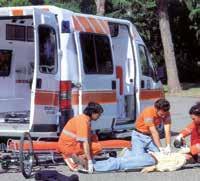Rome for pilgrims
ROME’S PILGRIM ROUTES Much of the layout of Renaissance Rome was dictated by the needs of pilgrims to reach St Peter’s from all parts of the city. Arianna Farina The layout of Rome n the early 15th century was still determined by its mediaeval shape. It was only thanks to the urban planning policies of the great 15th-century popes that the city began to take on the Renaissance form that is still partly visible today. There is a close relationship between the main thoroughfares of the Renaissance and the current street plan of Rome’s historic centre. Its very survival is an invitation to explore these streets which still retain their architectural styles, as well as the urban and social functions of that great season of Renaissance Rome, which still influences the daily life and the needs of today’s city. It was in the second half of the 15th century that the appearance and concept of Rome changed, beginning with its main centres: Borgo on one side and the planned and new Renaissance quarter on the other. It marked the start of the urban planning which was to shape the historic city that we can recognise today.
Rome in 1688.
Borgo, traditionally a pilgrim destination because of the tomb of St Peter, was described in the late 15th century as a devastated and abandoned area. It is said that the very Romans “dared not go to the basilica for fear of being crushed by teetering buildings. Packs of ravenous wolves broke in close to the Vatican in winter.” Repopulated, saved from degradation and finally connected to the rest of the city, in the first years of the 16th century this zone became a vital residential area of Rome with the creation of a street
Wanted in Rome 11 7







